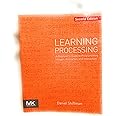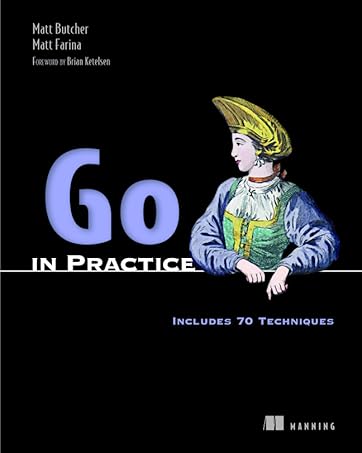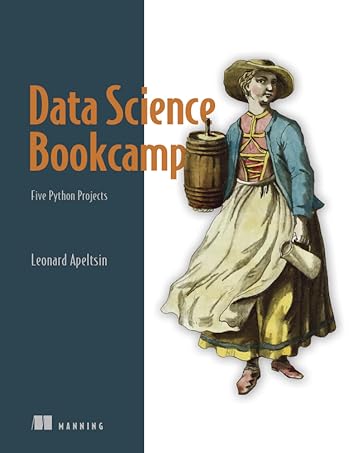Your Amazon Prime 30-day FREE trial includes:
| Delivery Options |  |
Without Prime |
|---|---|---|
| Standard Delivery | FREE delivery | From £2.99* |
| Premium Delivery | FREE delivery | £4.99/delivery |
| Same-Day Delivery (on eligible orders over £20 to selected postcodes) Details | FREE delivery | £5.99/delivery |
Unlimited Premium Delivery is available to Amazon Prime members. To join, select "Yes, I want a free trial with FREE Premium Delivery on this order." above the Add to Basket button and confirm your Amazon Prime free trial sign-up.
Important: Your credit card will NOT be charged when you start your free trial or if you cancel during the trial period. If you're happy with Amazon Prime, do nothing. At the end of the free trial, you will be charged £95/year for Prime (annual) membership or £8.99/month for Prime (monthly) membership.
Buy new:
-7% £24.07£24.07
Dispatches from: Amazon Sold by: Amazon
Save with Used - Very Good
£9.32£9.32
£2.80 delivery 3 - 5 April
Dispatches from: World of Books Ltd Sold by: World of Books Ltd

Download the free Kindle app and start reading Kindle books instantly on your smartphone, tablet or computer – no Kindle device required.
Read instantly on your browser with Kindle for Web.
Using your mobile phone camera - scan the code below and download the Kindle app.

Generative Art: A Practical Guide Using Processing Paperback – 14 July 2011
Purchase options and add-ons
DESCRIPTION
Artists have always explored new media, and computer-based artists
are no exception. Generative art, an emerging technique where print or
onscreen images are created by use of computer algorithms, finds the
artistic intersection between programming, computer graphics, and
individual expression.
Generative Art presents both the technique and the beauty of
algorithmic art. In it, you'll find dozens of high-quality examples of
generative art, along with the specific programmatic steps author and
artist Matt Pearson followed to create each unique piece. The book
includes concise tutorials for each of the technical components
required to create the book's examples, and it offers countless
suggestions for how you can combine and reuse the various techniques
to create your own works.
KEY POINTS
• Introduction to the principles of algorithmic art
• Brief Processing language tutorial
• Establishing artistic "ground rules" for a new work
• Using random, semi-random, emergent and fractal processes
• Finding fresh approaches to the discipline of programming
• Sixteen-page full-color section of beautiful artwork
- ISBN-101935182625
- ISBN-13978-1935182627
- Edition1st
- PublisherManning Publications
- Publication date14 July 2011
- LanguageEnglish
- Dimensions20.32 x 1.78 x 20.32 cm
- Print length300 pages
Frequently bought together

What other items do customers buy after viewing this item?
From the brand

-

Manning is a publisher of computer books, videos and projects for software developers, engineers, architects, system administrators, managers and all who are professionally involved with the computer business. We also publish for students and young programmers, including occasionally for children.
-
How we get our start?
We published our first book in 1993 and have been learning from our successes, and even more from our mistakes, ever since. Every new book teaches us something that helps us improve.
What makes our products unique?
"Independent" means we are not owned by a large corporate entity and are free to make our own decisions. This has allowed us to innovate and be flexible and to quickly adjust what we do as we go.
What do we publish?
We publish standalone titles as well as a number of book series.
-
More from Manning
-

In Action Books
Introduces new technologies to working technical professionals.
Typically intermediate level.
-

In Practice Books
Cook-book-style references, generally organized in order of difficulty.
Typically intermediate level.
-

In Depth Books
“second” books on technical topics that cover key areas a greater levels of depth and detail.
Typically intermediate-advanced level.
-

In a Month of Lunches Books
Introduces core technical topics via a series of small lab-based lessons that should each take about 30-45 minutes to complete.
-

Grokking Books
Tutorials with a graphical teaching style designed to offer a deep understanding of a technologies foundations.
-

Get Programming Books
Structured tutorials built around hands-on exercises and progressively more difficult capstone projects
-

Bookcamp Books
Collections of 6-10 medium-sized projects similar to what a reader will face on the job.
Typically intermediate level.
-

Hello! Books
Designed to be a gentle first book on a technical topic.
Beginner level.
Product description
About the Author
Product details
- Publisher : Manning Publications; 1st edition (14 July 2011)
- Language : English
- Paperback : 300 pages
- ISBN-10 : 1935182625
- ISBN-13 : 978-1935182627
- Dimensions : 20.32 x 1.78 x 20.32 cm
- Best Sellers Rank: 308,423 in Books (See Top 100 in Books)
- Customer reviews:
About the author

Discover more of the author’s books, see similar authors, read book recommendations and more.
Customer reviews
Customer Reviews, including Product Star Ratings, help customers to learn more about the product and decide whether it is the right product for them.
To calculate the overall star rating and percentage breakdown by star, we don’t use a simple average. Instead, our system considers things like how recent a review is and if the reviewer bought the item on Amazon. It also analyses reviews to verify trustworthiness.
Learn more how customers reviews work on AmazonTop reviews from United Kingdom
There was a problem filtering reviews. Please reload the page.
- Reviewed in the United Kingdom on 6 January 2023This is an excellent companion to the Processing language, with plenty of code examples. Thankfully, it is not a dry programming reference manual for Processing/Java. It is thoughtfully written and introduces topics such as 3D, noise objects and recursion without getting bogged down in too much detail. It’s even humorous in places, I particularly like the idea that The Smiths and Echo and the Bunnymen are instances of class 80s English Indie Band!
A very useful feature of the book is owning the physical book gives access to the online edition, which allows you to read the book side by side with a Processing sketch, cutting and pasting code directly into a sketch window.
The book is over 10 years old and could do with a new edition. Not all the URLs work and I’m sure there are more recent art works that could now be listed.
But still a very good book.
- Reviewed in the United Kingdom on 27 May 2013The author is well respected both by myself and many across the world.
This book delves into the theory behind generative art and is full of examples and code and lovely images too.
Its the generative art handbook for processing - an essential guide to those who want to explore creativity with code
- Reviewed in the United Kingdom on 16 July 2020The book was perfect but came damaged so slightly disappointed
- Reviewed in the United Kingdom on 29 December 2012Pearson has put together a well structure introduction and tutorial guide into generative computational techniques. On par with Shiffman's books.
- Reviewed in the United Kingdom on 13 February 2015Top!
- Reviewed in the United Kingdom on 15 August 2014Excellent
- Reviewed in the United Kingdom on 13 July 2011Buy this book if you are looking for something in between a coding manual, reference book, discussion of and a history of Generative Art. Matt has hit upon a good balance for those who find a pure programming book makes their eyes glaze over and want to understand the why aswell as the how. The book is structured so that the introduction is gradual without getting too heavy on the coding side of things for too long. After that the book deepens your understanding and teaches you some of the more complex and beautiful algorithms used in GenArt. Not only is it an informative an interesting read in its own right it is also a useful reference to come back to again and again.
- Reviewed in the United Kingdom on 1 January 2021This is an introduction to producing generative art using the Processing language. Processing was invented to be an “easy” language for artists to learn. In its original form, it is based on a stripped down version of Java. (There is also a Python Mode available on the web.)
The book has an introduction to generative art, and introduction to Processing (Java Mode), and three example sections on its use for art: emergent swarming behaviour, cellular automata, and fractals. There are lots of good examples to copy and modify, and also lots of pictures of somewhat more sophisticated examples of generative art.
Note for publishers: don’t typeset your books in a minuscule typeface, grey text on white, with paper so thin that the text shows through, if you want anyone over the age of 25 to read it comfortably. I frankly skimmed in places. Nevertheless, this book should provide a good introduction to Processing for artists, providing basic skill that can then be incrementally upgraded as time goes by.
Top reviews from other countries
 TheGregoReviewed in the United States on 5 October 2011
TheGregoReviewed in the United States on 5 October 20115.0 out of 5 stars Great GenArt Book for Noobs and Not-So-Noobs
As someone that was not completely new to processing, but wanted to get more into generative art, this book was perfect.
He goes over some basic concepts in a not too detailed, but detailed enough way to get you up and running. I don't think this book was meant to be a comprehensive guide to processing, but more to expose you to techniques and concepts within the world of generative art. And that it did. It's sparked many ideas that I now have and can't wait to explore. I'm confident that the concepts that I learned in this book will be transferable to whichever creative coding programming environment I choose to explore next, be it flash, cinder, javascript/HTML5/canvas, etc.
Thanks Matt.
-
 G. R.Reviewed in Germany on 21 September 2011
G. R.Reviewed in Germany on 21 September 20115.0 out of 5 stars Grandios!
Ich war dem Buch anfangs etwas kritisch gegenübergestellt, vor allem weil ich nicht genau wusste, was ich erwarten sollte. Nur Code-Snippets, nur Mathematik, einen Lehrpfad zum Künstler?
Schon auf den ersten Seiten erklärt der Author, dass es bei dem Buch nicht ums Programmieren geht, oder um jemanden zum Künstler auszubilden.
Mittels kleinen Codesnipptes gibt er Denkanstöße, um selbst kreativ zu werden. Toller Aufbau, sehr gut gewählte Inhalte (Processing, Flocking, Randomness etc.)
Am besten hat mir das Kapitel gefallen, in dem er häufige Fehler aufzeigt.
Tolles Buch, 5 Sterne, und auch für alle geeignet, die noch nie etwas mit Processing oder "Generative Art" zu tun hatten!
 Client d'AmazonReviewed in France on 15 September 2016
Client d'AmazonReviewed in France on 15 September 20165.0 out of 5 stars hello from sofia
Great art references and easy to read. I also appreciate a lot the sense of humour. A good choice for beginners.
-
 XAVISAReviewed in Spain on 6 July 2015
XAVISAReviewed in Spain on 6 July 20155.0 out of 5 stars Buen libro para iniciarse
El libro es de lectura ágil; explica aspectos básicos de la programación con Processing y del arte generativo
Se avanza con programas cortos de fácil comprensión, perfecto para iniciarse
Bien editado
-
 Luigi FontanaReviewed in Italy on 15 October 2022
Luigi FontanaReviewed in Italy on 15 October 20225.0 out of 5 stars Ottimo testo base.
Ottimo testo per capire Processing. Forse un po' "didattico" e monotono, ma questi difetti vengono ampiamente compensati dalla facilita dell'apprendimento delle logiche del linguaggio.
Se partite da zero è il testo che fa per voi.























